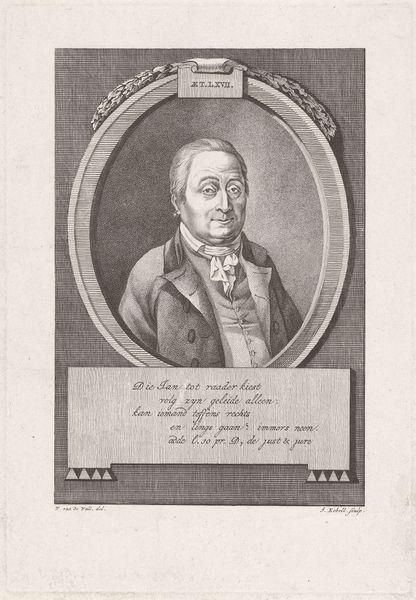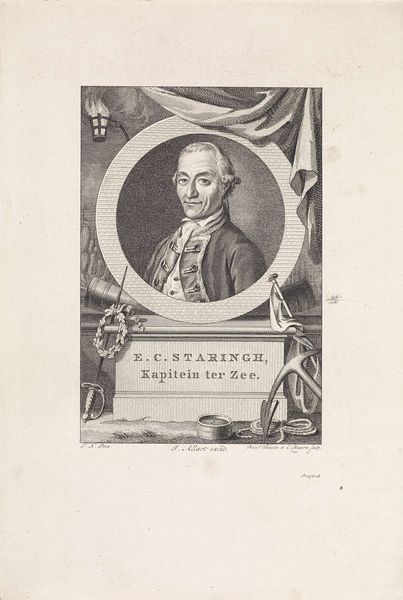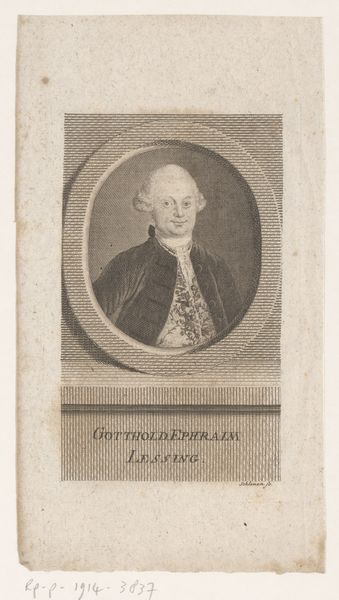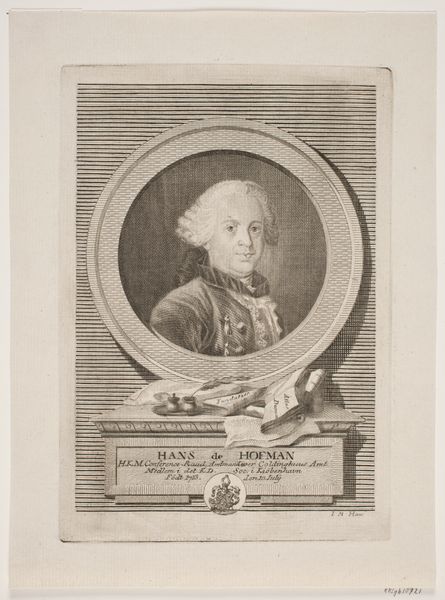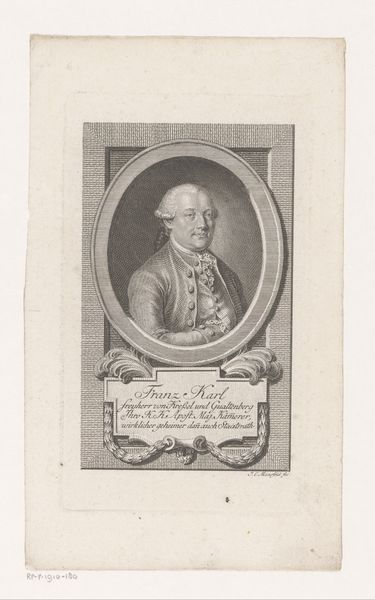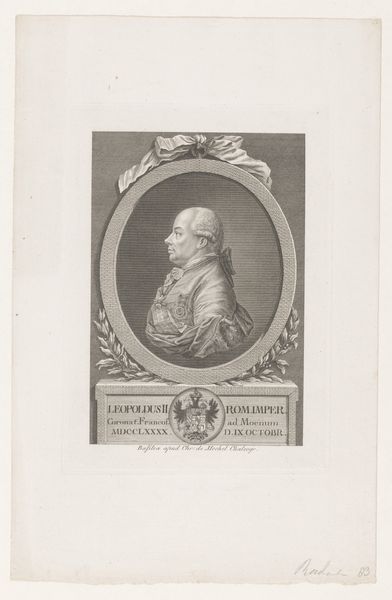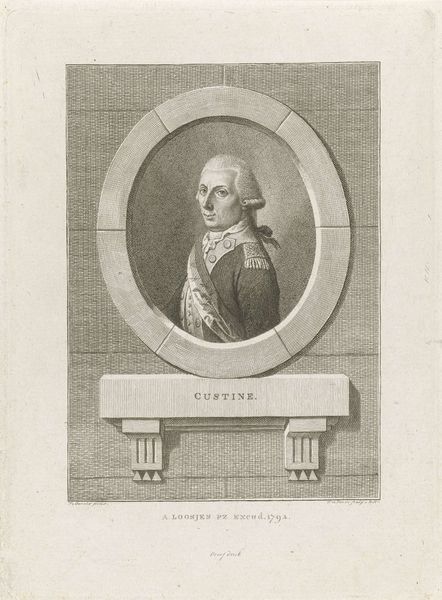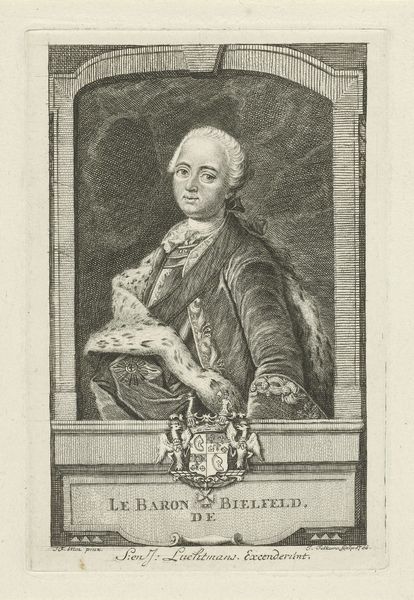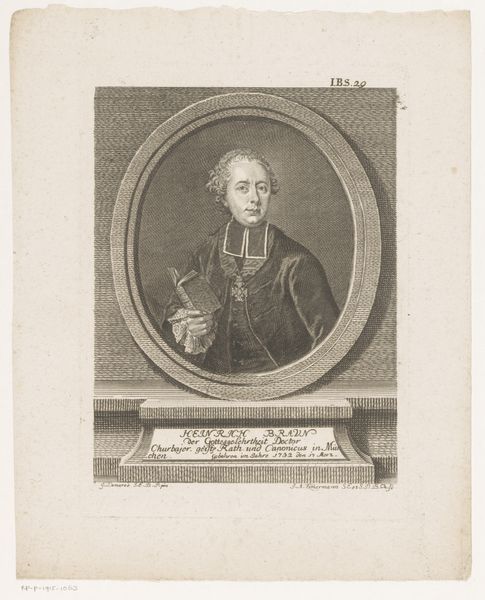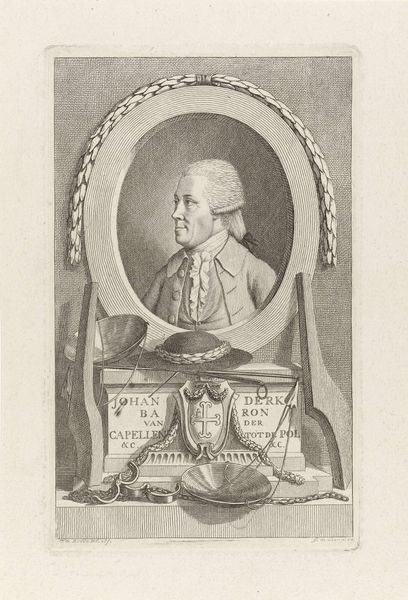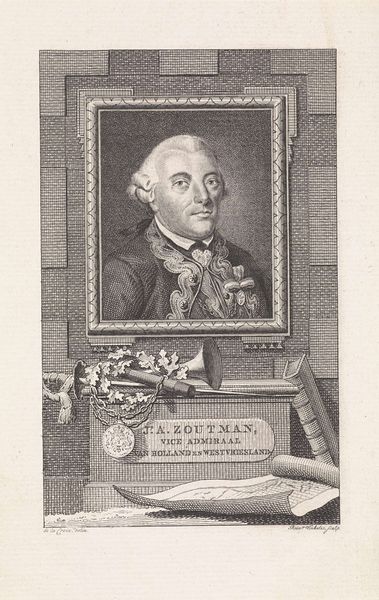
Dimensions: height 216 mm, width 148 mm
Copyright: Rijks Museum: Open Domain
Editor: So, this is "Portret van Gerardus Oorthuys," an engraving dating back to somewhere between 1752 and 1825, currently held in the Rijksmuseum. The level of detail achieved through engraving is remarkable! What I find especially interesting is how the piece isn’t *just* a portrait but seems to position Oorthuys within a broader narrative. What strikes you most about it? Curator: You've hit on a key point. The engraving isn't merely a portrait, it's a carefully constructed piece of public imagery, intended to project a specific persona and solidify Oorthuys' position in society. Note how the naval instruments, such as the telescope and map, directly relate to his title as a captain. What story is the artist attempting to communicate and for whom? Editor: I guess, to establish Oorthuys as a figure of authority, someone important and capable, obviously targeting people who commission or purchase these types of prints? Does the choice of engraving contribute to this message? Curator: Precisely! Engravings were often reproduced and distributed widely, making them a powerful tool for shaping public perception, acting almost like an early form of social media for the elite. The rigid formality, combined with the idealized setting, emphasizes not just individual identity but also social role and status, in that time period, can you reflect on the broader impact the print has within Dutch naval and commercial history? Editor: It's fascinating how a single print can act as both a personal commemoration and a piece of political messaging. Thinking about the history, prints like these were likely crucial in cultivating national pride and legitimizing maritime power during the Dutch Golden Age... It's almost like propaganda, isn't it? Curator: Indeed. And recognizing that dimension – how art is always embedded in specific social and political landscapes – changes how we "read" it. Thanks to your thoughtful considerations, this allows for a more historically grounded interpretation. Editor: Absolutely, considering that aspect broadens one's thinking in more than one ways when observing it. I'll keep an eye out from now on!
Comments
No comments
Be the first to comment and join the conversation on the ultimate creative platform.
